Not only are Teddy and Rudi Lazuardi active on Instagram sharing shots of artworks, they also co-founded Motomoto Museum to cater to the Instagram hype. Started collecting art over a dozen of years ago, though the two brothers may not have the same tastes in art, they share the journey alongside each other, in which their passion for art unites them.
Teddy and Rudi Lazuardi told LARRY’S LIST how they started collecting respectively; the type of art that constantly attracted each of them; what motivated them to open Motomoto Museum; the art they displayed in their co-owned restaurants; as well as the upcoming art events in Indonesia to watch out for, from Art Jakarta to Bandung Art Month.
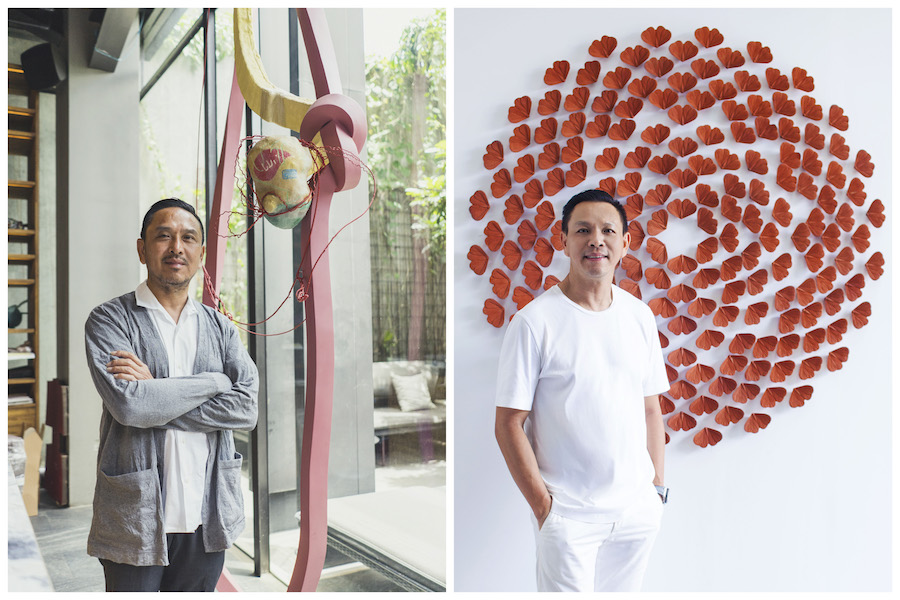
Collecting
What made you want to start collecting art? What is the main motivation behind your collecting?
Rudi (R): In 2007, I was in the process of moving and wanted to fill the new empty house, but wasn’t sure with what. I was on a trip to Bandung when I saw an auction catalogue (Sidharta) for sale at a bookstore (Periplus), funnily enough, the auction was not for another two weeks. I attended the auction and bought my first pieces: a bronze sculpture by Win Dwi Laksono and also a small Nasirun painting as I was reading about the collection of Oei Hong Djin. Between 2007 and 2010, I developed better understanding with regard to the roles of auction houses, galleries, and exhibitions, and as I met more and more friends from the art communities, this cemented my motivation to start collecting.
Teddy (T): I wanted to study Fine Art but was not allowed by my parents. I even tried painting, I think it was abstract at the time. Fast forward to early 90s when I came back to Indonesia, we often hung out with Harry Kusuma, at his father’s house, Deddy Kusuma, a very prominent Indonesian collector. Whenever we played cards, played pool, it was always surrounded by Affandi, Budi Kustarto, Sudjojono, and many more, it was quite surreal. There was this Sudjojono piece in particular, it had this person with a bike and an umbrella; I did not understand what it meant, but I fell in love with the composition and the blue. I think that’s when I started to really want to collect art. Even though I could not be an artist, I wanted to know more and more about the art world.
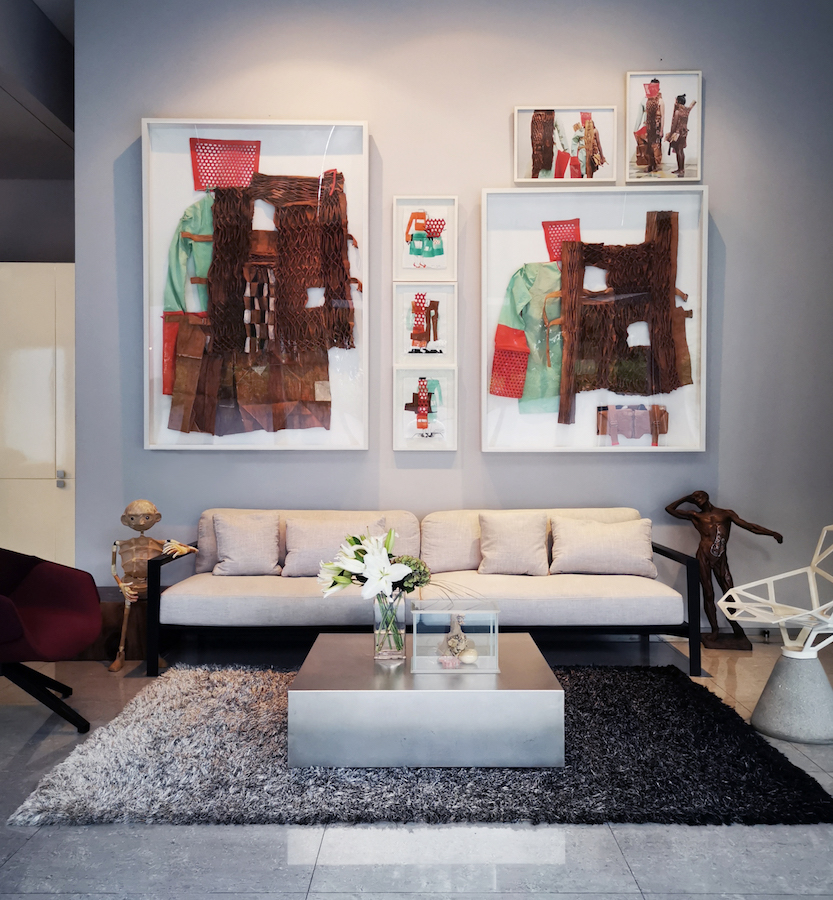
When did you fall in love with a piece of art? What was it?
R: Since I was young, I was very much interested in interior design and elements, so I don’t think there was a particular piece. But I remember going to an exhibition in a hotel, and purchased five paintings because they really struck me.
T: It was the Sudjojono blue painting mentioned earlier.
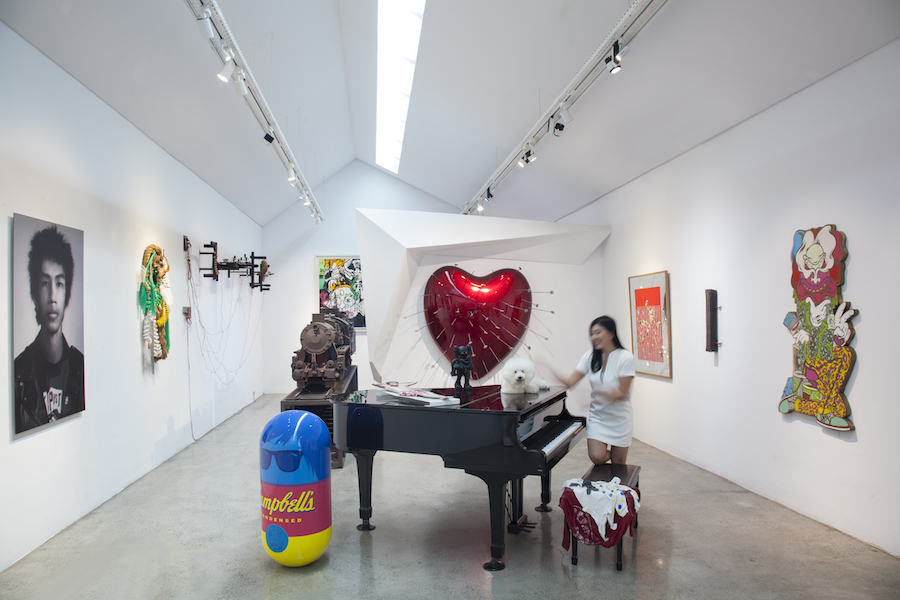
What is the proportion of emerging artists to renowned ones in your collection?
R and T: Around 80 : 20 (emerging : renowned)
Is there any particular type of art that has consistently attracted you, or anything that unites all the works you have acquired?
R: I am attracted to big works, colourful and eye-catching ones.
T: For me, it’s the dark and bold.
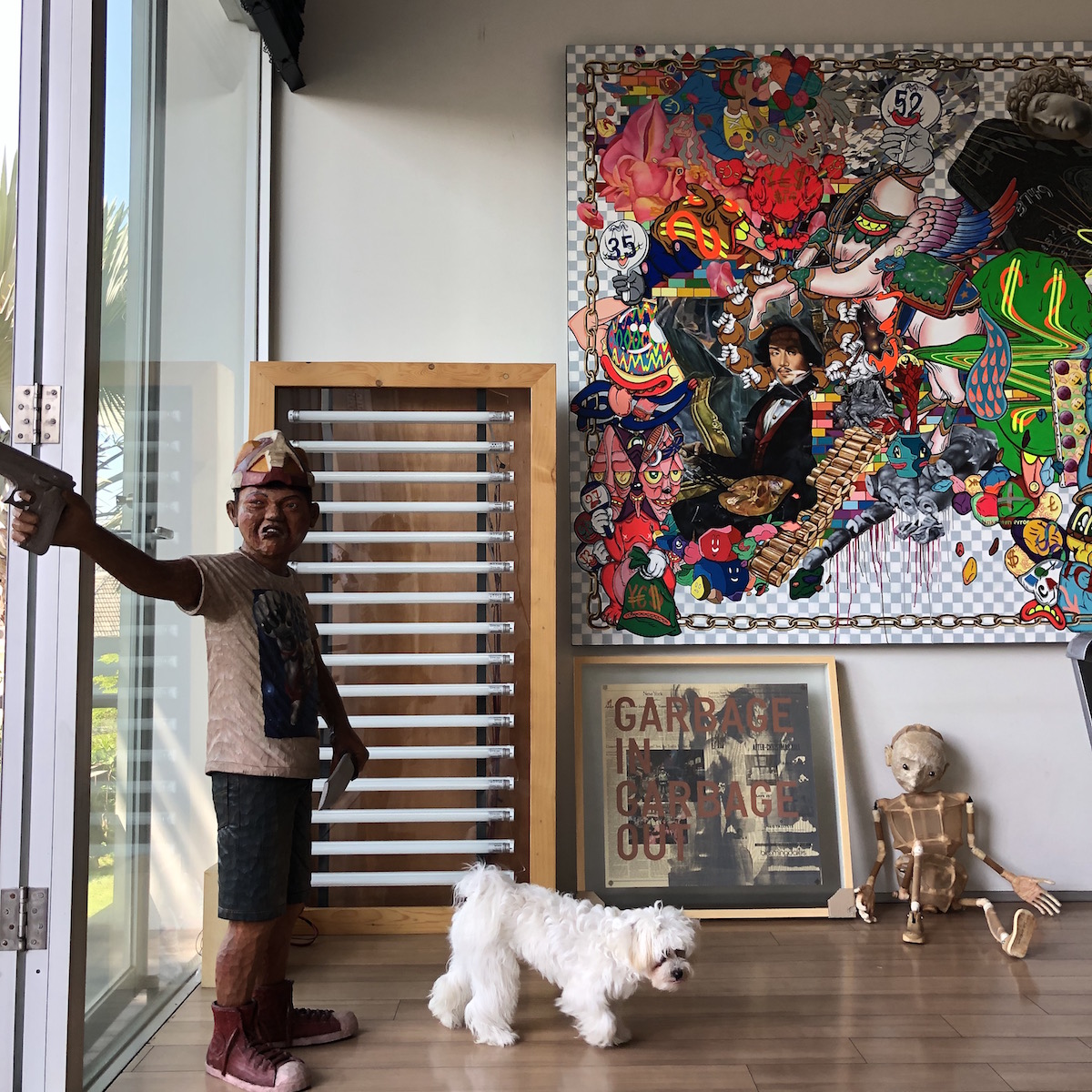
What were the first and the latest artworks you purchased?
R: The first one was that erotic sculpture byWin Dwi Laksono and Nasirun painting in 2007. And the latest one was a mix-media installation by Jompet Kuswidananto entitled “On Paradise, On Afflection” (2018)at the last edition of Art Jakarta from Arario Gallery, also a Gilang Fradika painting (“The Race”, 2019) from his solo exhibition at RUCI Art Space last year.
T: My first piece was a Wahyu Santosa sculpture back in 2007 and the last piece I bought was “Rise of the Dark Prince” (2019) by Uji “Hahan” Handoko Eko Saputro, last year from the group exhibition “Shifting Tides”.This year, we have just finished installing a commissioned piece by Handiwirman Saputra at Gormeteria. Spanning from the top floor to the ground floor, it hangs at 23 meters in height, I am very happy to have it there.
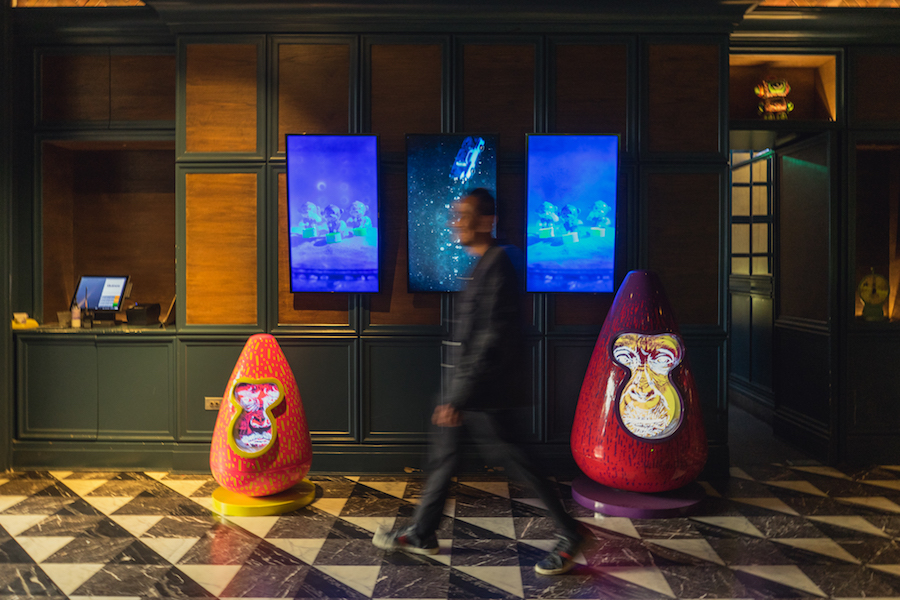
How many artworks do you own? Where do you display your collection?
R: Maybe around 200.
T: Around 100 perhaps.
Have you ever presented your art collection publicly?
R: Yes, I loaned some of my collection to exhibitions: “Matter Matters: New Media, Materiality, and the Artworld” at Can’s Gallery this year, and “Bongkar Gudang #1: XOXO” at Rubanah Art Underground. The largest work from my collection I’ve ever loaned was an installation entitled “Pruning” (2017) by Handiwirman Saputra, for La Biennale di Venezia.
T: Hmm. My collection and commissioned artworks can be seen publicly and the most comprehensively throughout Gormeteria and Picknick, a restaurant and a rooftop bar within one building.
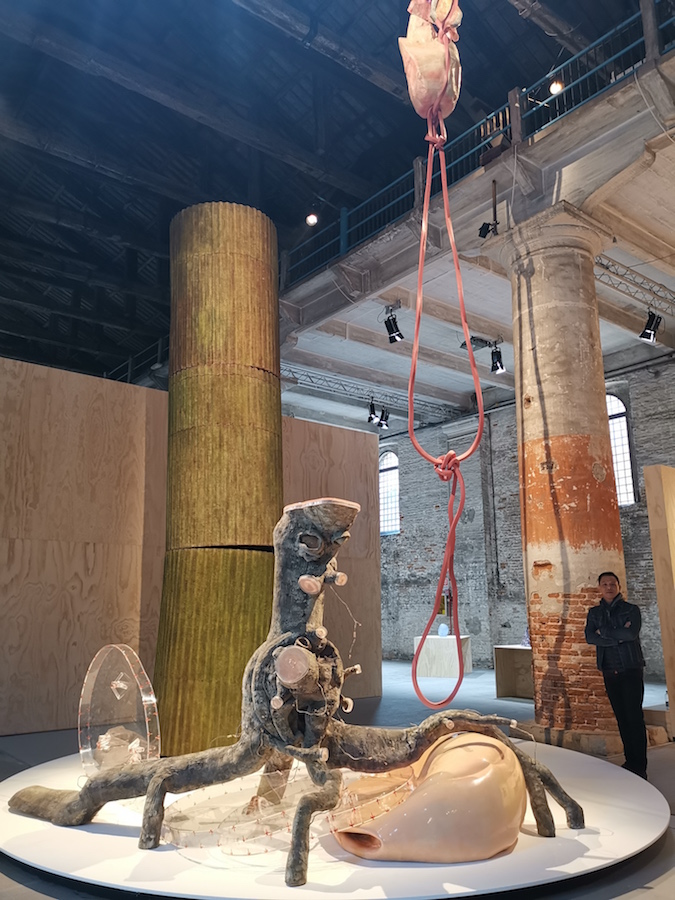
What considerations guide you to make a purchase?
R: For me, it has to strike me visually, then I would find out more about the context or background of the work. I need to love it at the first sight, then understand the meaning behind it, so in the beginning, knowing who it is by isn’t necessarily a priority.
T: Yes, it is important to love it visually, but we also influence each other.
How important is it for you to meet the artists who created the artwork?
R: For me this isn’t more important than the work. More often than not, what intrigues me the most is the artwork.
T: Whereas for me, getting to know the artist can be quite a significant factor. At times, there were moments when the work is probably visually not the best one in the series, but after an in-depth conversation with the artist, the way I look at that piece may change.
How do you make use of social media to discover artist and artworks?
R and T: We both utilize Instagram to keep ourselves updated with exhibition news and artists’ activities.
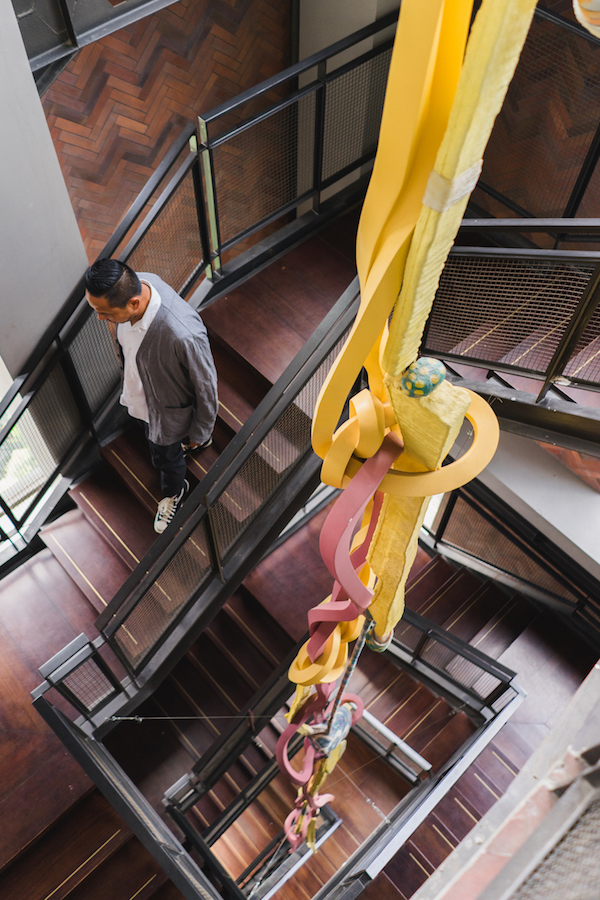
Motomoto Museum and art in restaurants
What motivated you to open Motomoto Museum?
R and T: We wanted to introduce the art world to youngsters, but with a light approach. We realize that selfie culture was potentially the first portal of appreciation. In addition to having immersive installation by artists and designers, we also held activations through interactive works, such as Fajar Abadi’s “kueh senyum” (2019), whereby the artist baked kueh (muffin, cookies, pao, pukis) on site, and collects smiles by selling them in exchange for his audience’s smiles. His physical gesture of giving a kueh to an audience as they receive it with a smile, suggested that the specific smile given is deserving of the kueh received, and vice versa. It was exactly the simple interaction that we wanted to have at Motomoto; and other works by Adi Panuntun of Sembilan Matahari that uses high technology, by Rebellionik, Naufal Abshar, and Mulyana also echoed the same spirit. Instagram : @motomotoid_
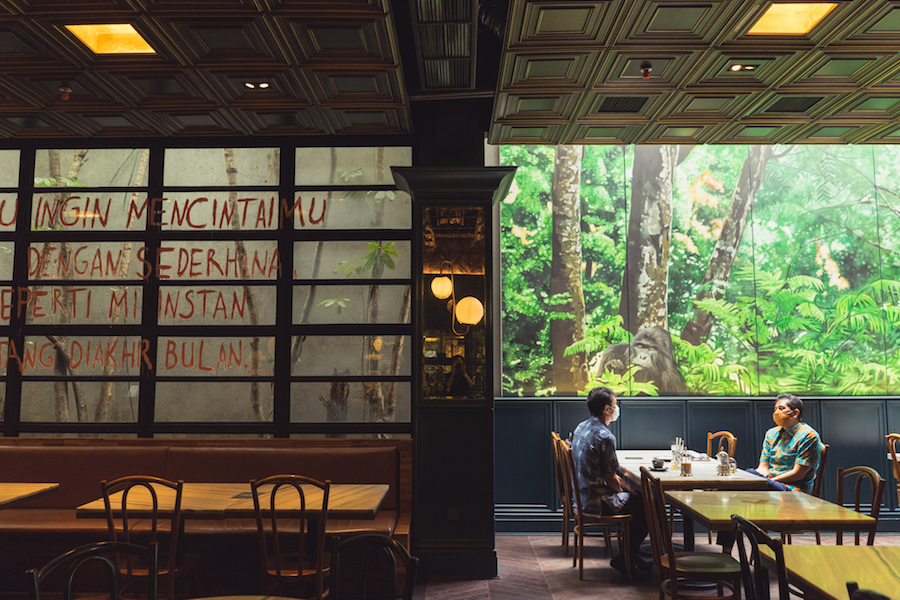
How did you come up with the idea to display art in your restaurants in Jakarta, Bandung, and Yogyakarta.?
R and T: We felt that besides our private collection, it would be really great to support artists by displaying their works publicly, whilst also complimenting the space’s interior. To prolong the life of an artwork in terms of audience viewing, that gives us joy.
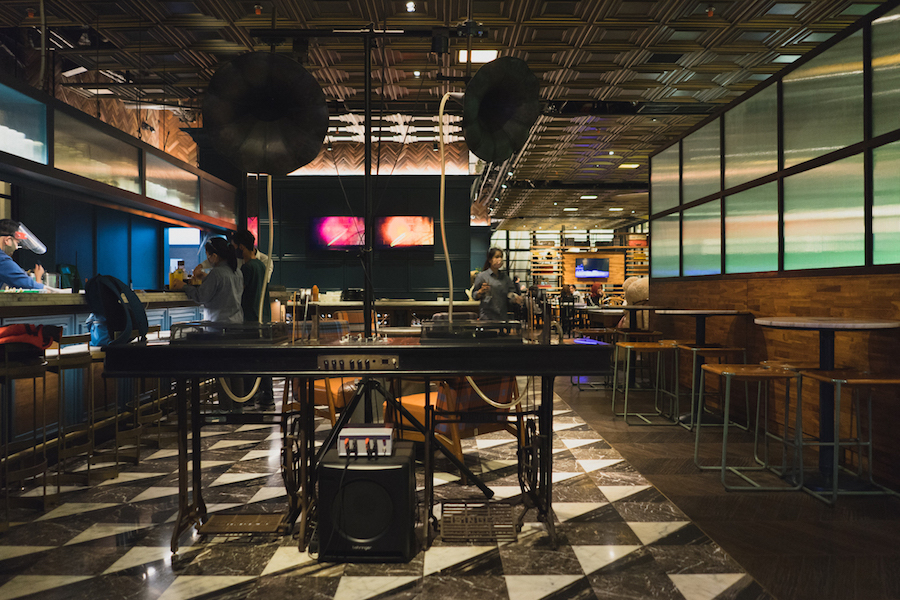
What kind of art do you exhibit in the restaurants? Any theme or focus?
R and T: Definitely contemporary ones, but we do not have a specific theme or focus, it really depends on the artists’ take on site-specificity when they enter the different spaces. At the moment, we have the works of Tempa, Darbotz, Soni Irawan, and Erica Hestu Wahyuni at our Jogja restaurants.
T: In Gormeteria and Picknick, I wanted the artists to really challenge themselves to create works that can be displayed in other ways, not submissive to a conventional white space. There is no limit in terms of surfaces and location that they can explore. The process is very organic, we would invite the artists to come and hang in the restaurant, to get a better feel of their vibes, and so that they can really immerse themselves into the space’s atmosphere, before proceeding to working on site-specific works.
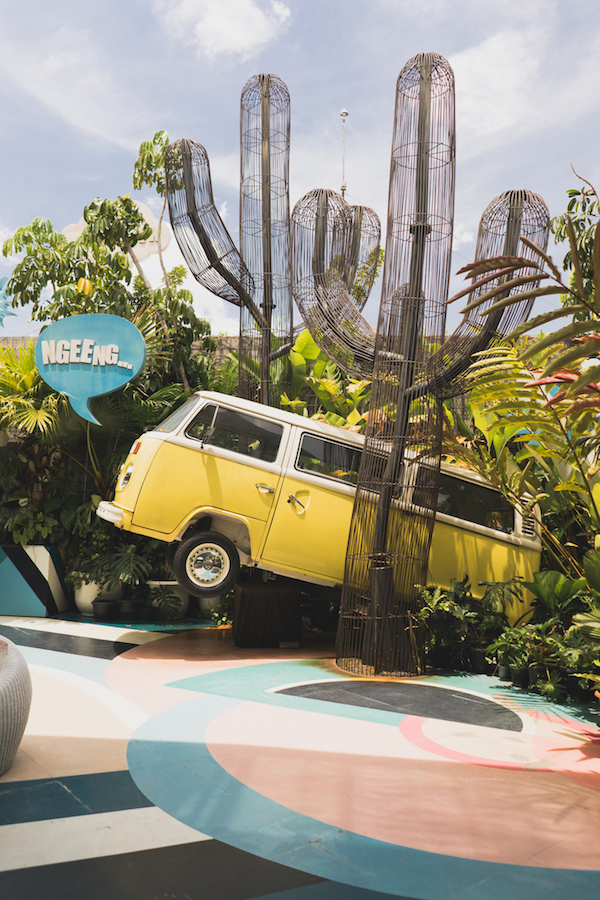
The Indonesian contemporary art scene
What is your vision for the contemporary art scene in Indonesia? How do you contribute to its development?
R: I feel we need to keep on building Indonesian contemporary art’s presence in terms of auctions, as it seems that our presence is dropping quite significantly. Aside from art fairs and gallery exhibitions, the auction’s presence is also a point of reference to introduce Indonesian artists to the world.
T: With regards to contribution, in addition to purchasing artworks, I feel that we can also support artists by showing their works publicly. As a collector, it feels good to share your collection outside your home, it gives the artists exposure, and the artworks can be viewed by more people, the more the merrier.
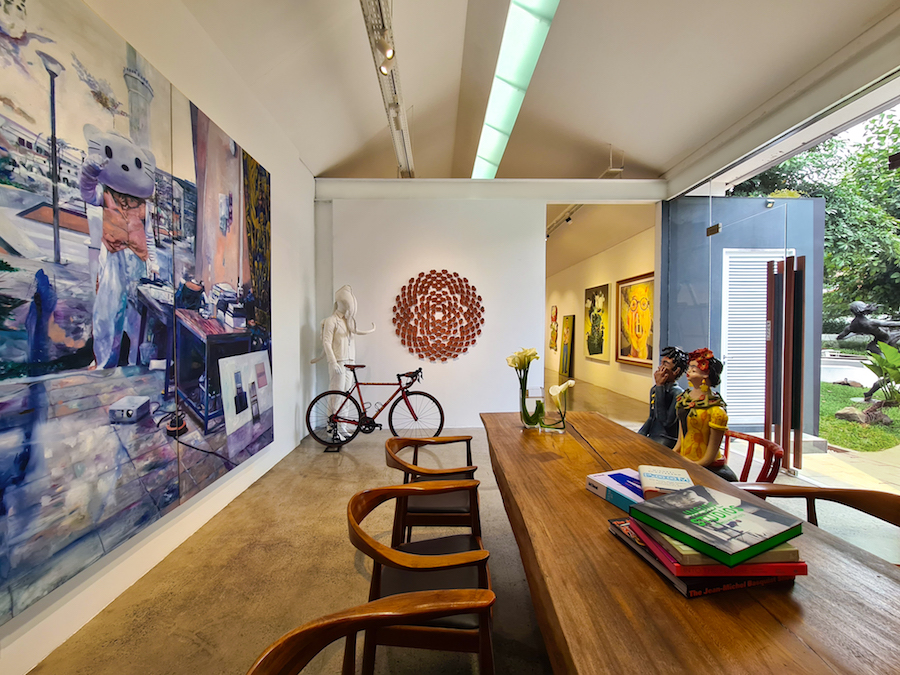
Can you name three emerging Indonesian artists who should be on our radar?
R: Mulyana, Iwan Effendi, and Julian Abraham “Togar”.
T: Nurrachmat Widyasena “Mas Ito”, Agan Harahap, and Bagus Pandega.
What are the upcoming art events in Indonesia we should watch out for?
R and T: Art Jakarta and Art Moments in Jakarta, and definitely ARTJog in Yogyakarta, as well as Bandung Art Month in Bandung.
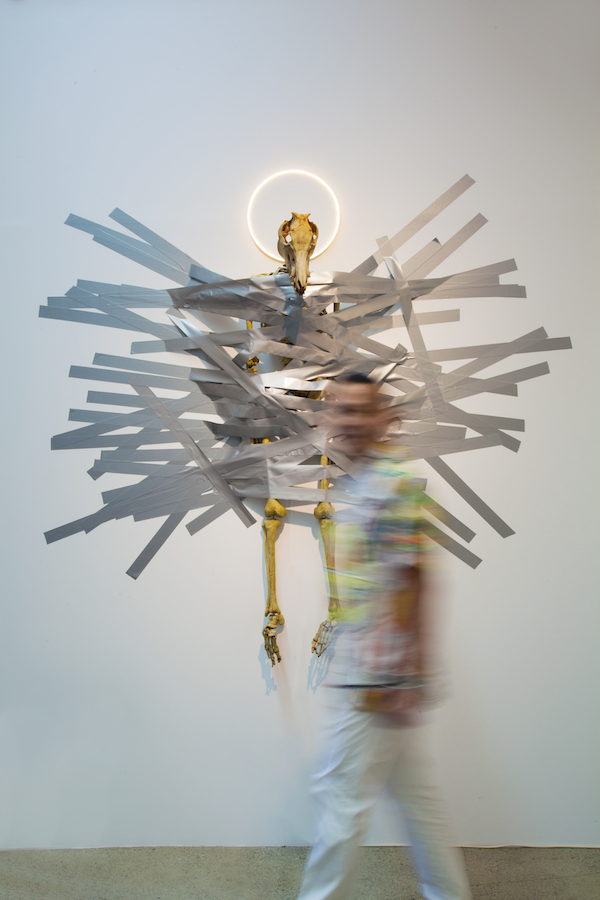
Instagram: @motomotoid_, @teddy_lazuardi, @rudilaz, @gormeteria, @picknick.kaliki
All photos by Ricko Fernando, Ibnu Kurniawan, Rifqi Fathullah
This interview was facilitated by Art Jakarta (Art Jakarta Virtual, 19 October – 15 December 2020).
A selection of artists Teddy or Rudi collect:
Agus Suwage
Erwin Windu Pranata
Handiwirman Saputra
Iwan Effendi
Uji ‘Hahan’ Handoko Eko Saputro
By Ricko Leung





